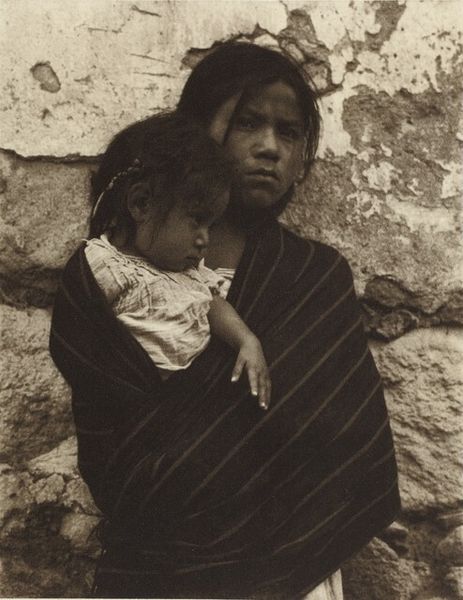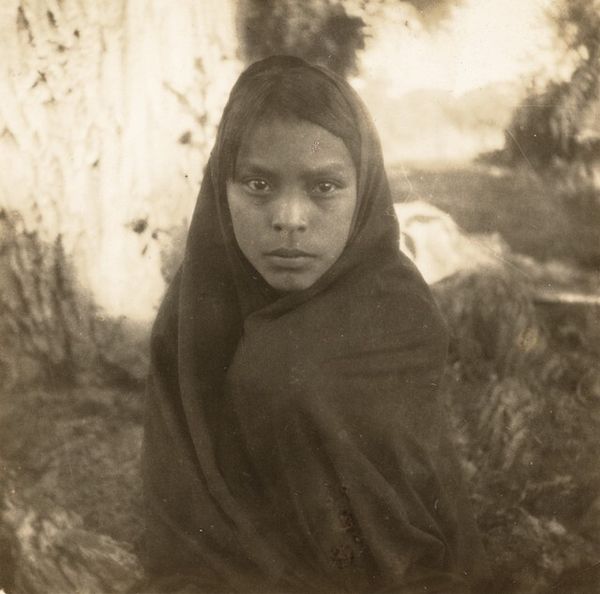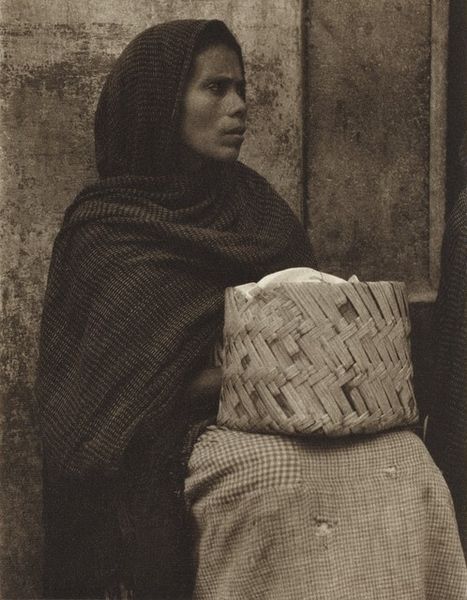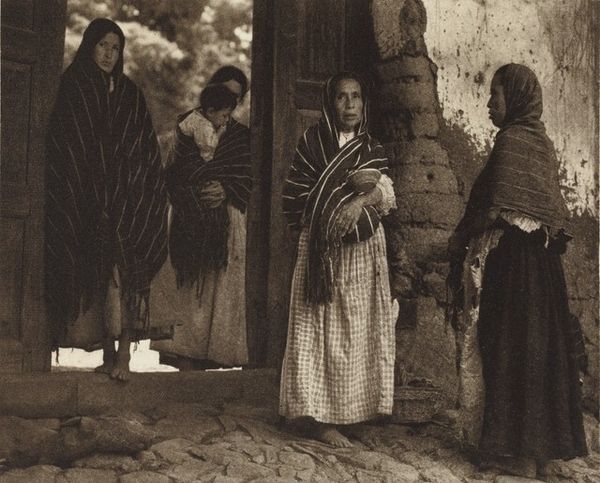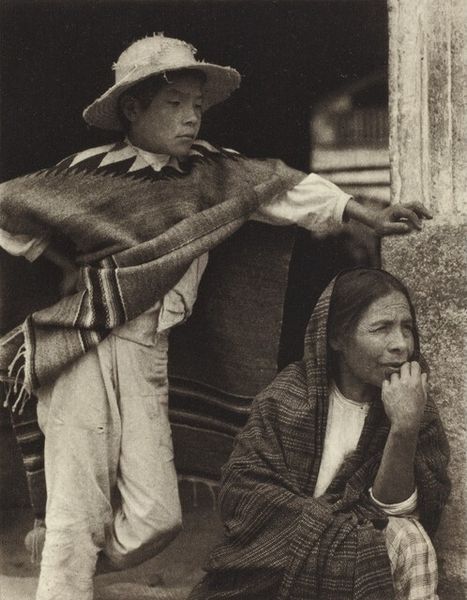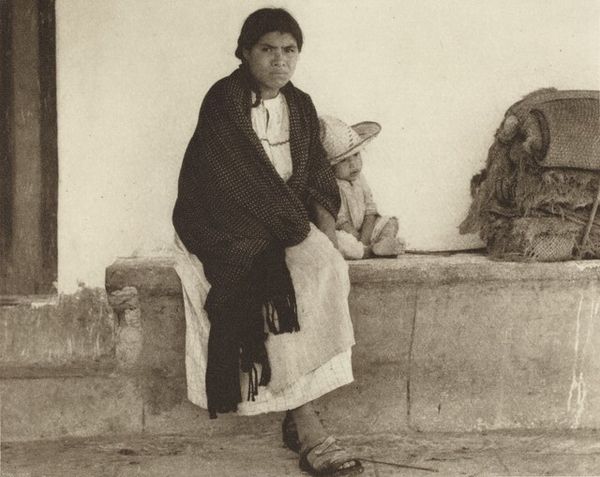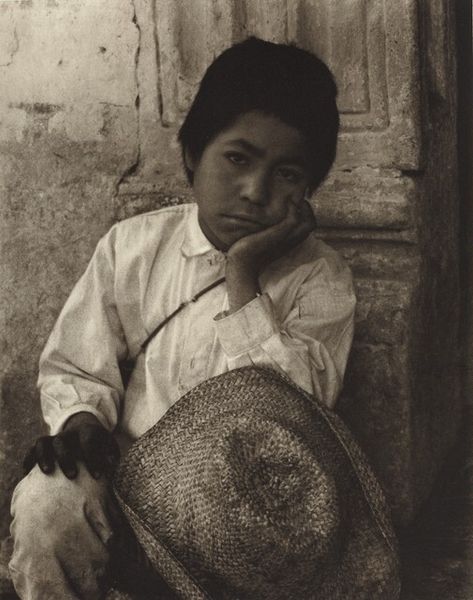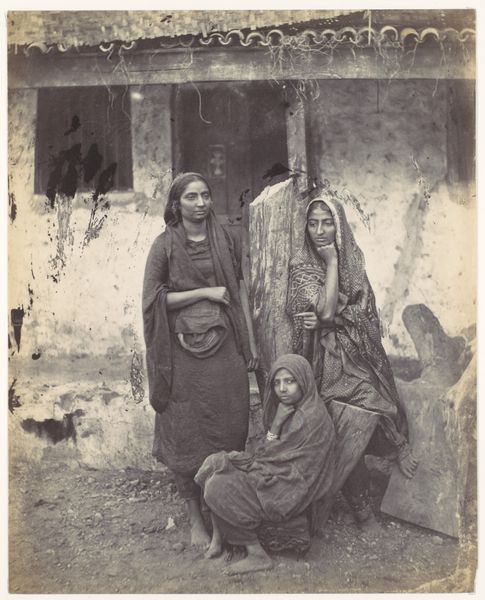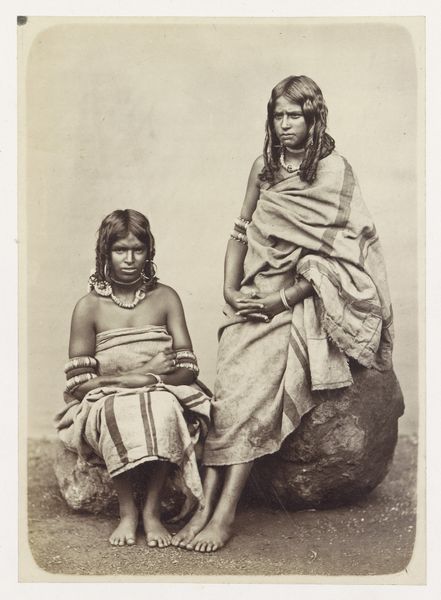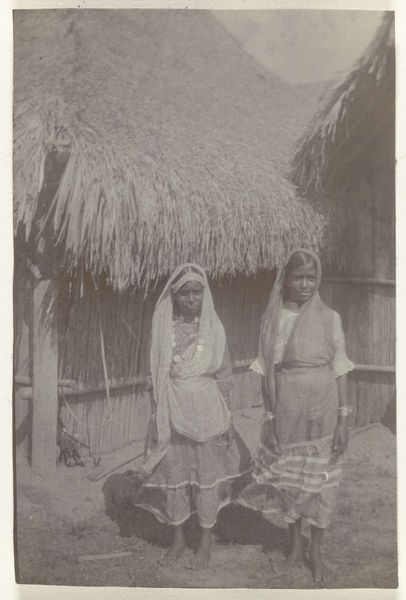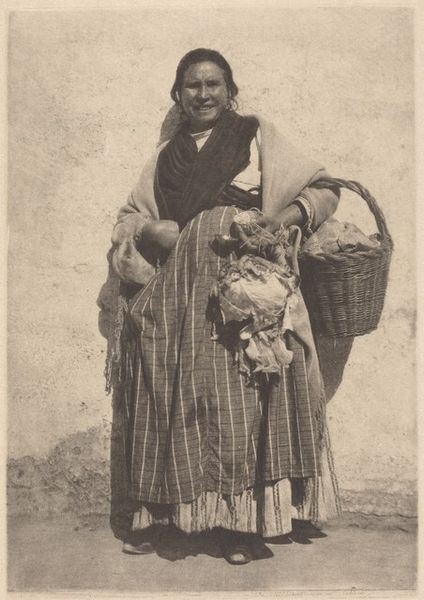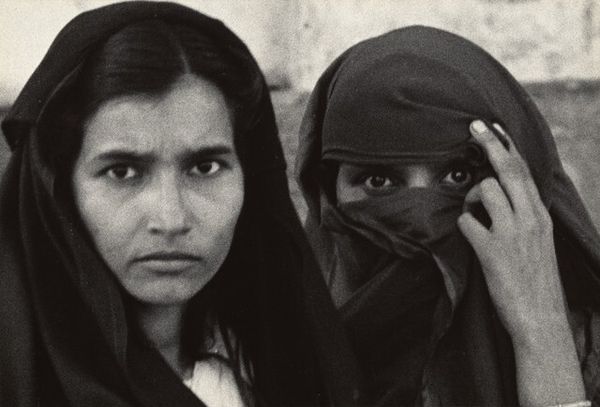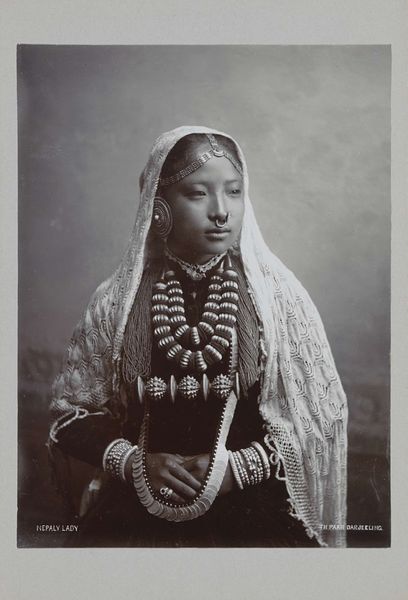
print, photography
#
portrait
# print
#
black and white format
#
photography
#
mexican-muralism
#
realism
Dimensions: image: 12.7 x 15.6 cm (5 x 6 1/8 in.) sheet: 40.3 x 31.4 cm (15 7/8 x 12 3/8 in.)
Copyright: National Gallery of Art: CC0 1.0
Curator: What strikes me immediately about Paul Strand’s photograph "Young Woman and Boy, Toluca" is this incredible gravity—a sort of quiet resilience radiating from these two figures. What's your initial read? Editor: It’s a potent image. You feel their presence so palpably. It definitely speaks to Strand's broader exploration of identity, place, and the social realities in post-revolutionary Mexico. His engagement with Mexican Muralism, during that period, really comes through, wouldn't you say? Curator: Absolutely. Strand, whose work possibly falls somewhere between 1933 and 1967, aimed for a kind of unvarnished truth. Look at the rough texture of the wall—it becomes a character in itself. And the boy's wide-brimmed hat—a touch of mystery and practicality combined. But did he avoid romanticizing the subjects in doing so? Editor: Well, his images of the rural people certainly played a role in defining and shaping national Mexican identity. It’s photography so powerful precisely because of that conscious framing, a deliberate social and political gesture, more than something passively romantic. Curator: That may be fair. As a print photograph, the blacks and whites are stunning, highlighting their dignified gazes that meet ours head on. There's an undeniable psychological depth here. Editor: Precisely, we're made to confront not just a scene but a condition, one rooted in histories of colonialism, migration, revolution, and the ongoing negotiations around indigeneity. His formal choices, such as the stark realism and focus on human subjects, place him in a lineage of politically engaged art. Curator: I guess the raw directness invites both scrutiny and empathy—the human gaze being such a powerful trigger. Editor: In that sense, the photo urges us to think about representation itself—whose stories are told, by whom, and for what purposes? Considering Strand's positioning within the artistic and social context, his work still speaks to so many current questions about equity, identity, and bearing witness. Curator: Beautifully said. It shows just how much one still photograph, even of ostensibly ordinary people, can hold for so long. Editor: Indeed, a quiet revolution of sorts, condensed in one frame.
Comments
No comments
Be the first to comment and join the conversation on the ultimate creative platform.
